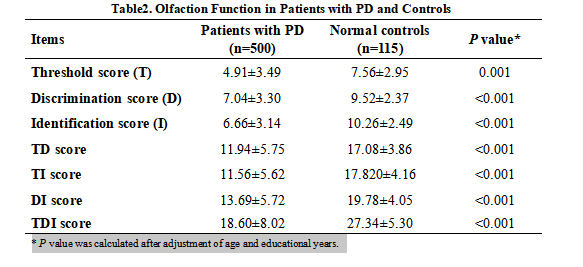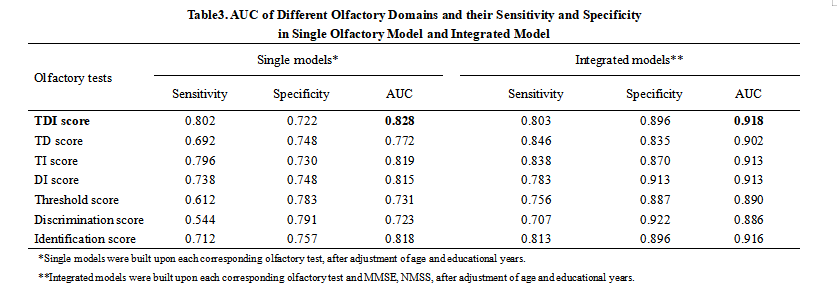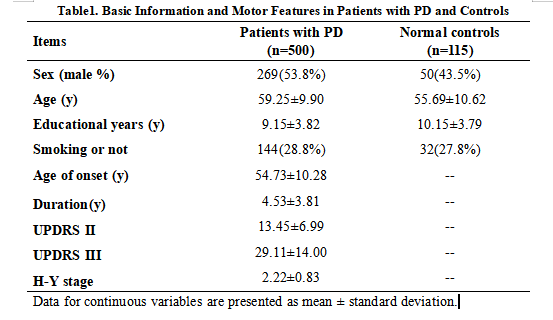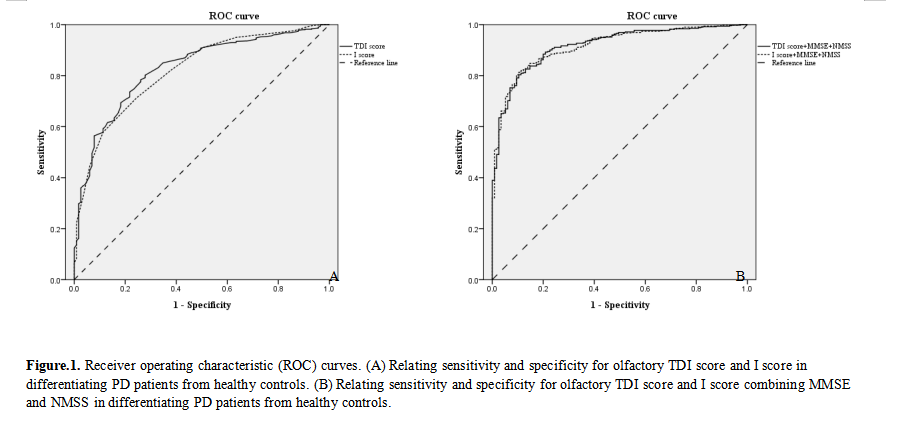Session Information
Date: Tuesday, September 24, 2019
Session Title: Parkinsonisms and Parkinson-Plus
Session Time: 1:45pm-3:15pm
Location: Agora 3 West, Level 3
Objective: The aim of this study was to evaluate which kind of olfactory domain was the best in discriminating PD patients from controls, and to explore the relationship between olfactory deficit and other manifestations in Chinese population.
Background: Olfactory deficit was one of the non-motor symptoms which may precede motor symptoms in Parkinson’s disease (PD), and olfactory functions mainly contained three olfactory domains, including threshold domain, discrimination domain and identification domain, which could be tested by Sniffin’ Sticks.
Method: Sniffin’ Sticks, which included olfactory threshold, discrimination and identification tests (TDI), were conducted in 500 PD patients and 115 controls. Furthermore, data collection included demographic information and clinical manifestations. (See Table.1 and Table.2) Logistic regression modeling and the receiver operator characteristic (ROC) curve analysis were used to compare discriminative power of different models.
Results: In the single olfactory model, the identification test showed the largest area under the ROC curve (0.818), followed by threshold test (0.731) and discrimination test (0.723). The combination of TDI (0.828) was slightly better than single identification test. When combined with other features, the TDI score were slightly better than identification test score in differentiating PD patients from controls. (See Fig.1) In PD patients, age and cognition together explained 13.3% of the variance of the threshold score, while age, cognition and gender accounted for the 40.2% explained variance of the discrimination score, while cognition, age, ability of daily living and gender together interpreted 36.1% of the variance of the identification score. (See Table.3)
Conclusion: Our results indicated the identification domain was the most practical olfactory factor in differentiating PD patients, and the combination of several different manifestations were better than single symptom. Furthermore, olfactory identification score may be associated with ability of daily living.
To cite this abstract in AMA style:
YW. Zhao, RC. He, JX. Yang, Y. Zhang, XT. Zhou, XX. Zhou, LX. Qin, Y. Tian, ZQ. Wang, QY. Sun, Q. Xu, JC. Li, JF. Guo, XX. Yan, BS. Tang. Discriminative power of different olfactory domains in Parkinson’s disease [abstract]. Mov Disord. 2019; 34 (suppl 2). https://www.mdsabstracts.org/abstract/discriminative-power-of-different-olfactory-domains-in-parkinsons-disease/. Accessed December 7, 2025.« Back to 2019 International Congress
MDS Abstracts - https://www.mdsabstracts.org/abstract/discriminative-power-of-different-olfactory-domains-in-parkinsons-disease/




